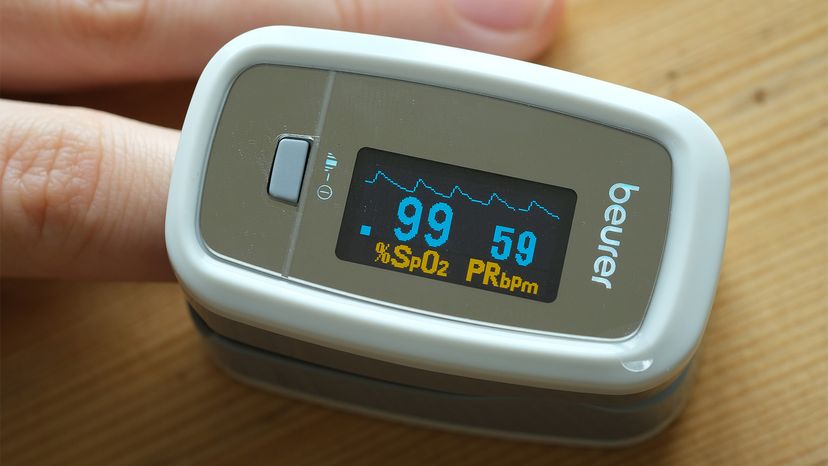
Have you ever heard the ER doctors in a TV show or movie call out excitedly about "pulse ox" or "O2 levels" and thought, "I'm not sure what that is but it must be important"? Well, you'd be right. They're talking about the oxygen (O2) level in the bloodstream, or how much oxygen is being carried by the red blood cells to other parts of the body. Monitoring the level of oxygen in the bloodstream is one way doctors have of telling whether or not a treatment is working.
Hypoxia occurs when the oxygen supply to the tissues and organs is low and can cause pneumonia-like symptoms, such as stiff or fluid-filled lungs, resulting in extreme shortness of breath – all of which can be signs of a COVID-19 infection. And doctors are even seeing a worrying trend in COVID-19 patients called "happy hypoxia" — blood oxygen saturation levels are extremely low, indicating that patients aren't getting enough oxygen to their lungs, yet they're showing no signs of breathlessness.
Advertisement
So, how do doctors test for low blood oxygen?
The arterial blood gas test, or ABG, is the best and most accurate way to test and monitor a person's blood oxygen level. It is an invasive test and must be done by a professional. A blood sample is drawn from an artery instead of a vein, because blood from arteries is oxygenated. Typically, physicians will draw the blood using the artery in the wrist, which can be painful but is easier to find than the artery near the elbow. ABG is measured in mmHG because gas is measured by the amount of pressure, or height in millimeters (mm), it exerts on a column of mercury (HG). A normal ABG is between 75 and 100 mmHG, according to the Mayo Clinic, and that means that the oxygen in your blood has a pressure sufficient to support a column of mercury 75 to 100mm high.
Another tool used for measuring blood oxygen is the noninvasive pulse oximetry test (pulse ox). It looks sort of like a large clothespin that snaps over your finger (or toe). By zapping the hemoglobin (protein molecules in your blood carrying oxygen) with infrared light, this nifty gadget can provide a numerical readout of the oxygen level in your blood. It's very fast; it takes just seconds to get a reading (though dark colored nail polish can block the light so you might have to remove it). Most health technicians place the pulse oximeter on the index finger, however a 2015 NIH study showed that the highest reading came from the third finger on the dominant hand. According to the Mayo Clinic, a normal pulse ox reading is typically between 95 and 100 percent for most healthy people. If you have existing health conditions but you are otherwise healthy, your readings could fall slightly lower and still be considered normal.
Symptoms of low oxygen in the bloodstream include:
- Shortness of breath
- Chest pain
- Confusion
- Headache
- Rapid heartbeat
As always when it comes to any medical test or procedure, your doctor is your best source of knowledge and information and you should always consult a medical professional for interpretation and evaluation of test results.
Advertisement


